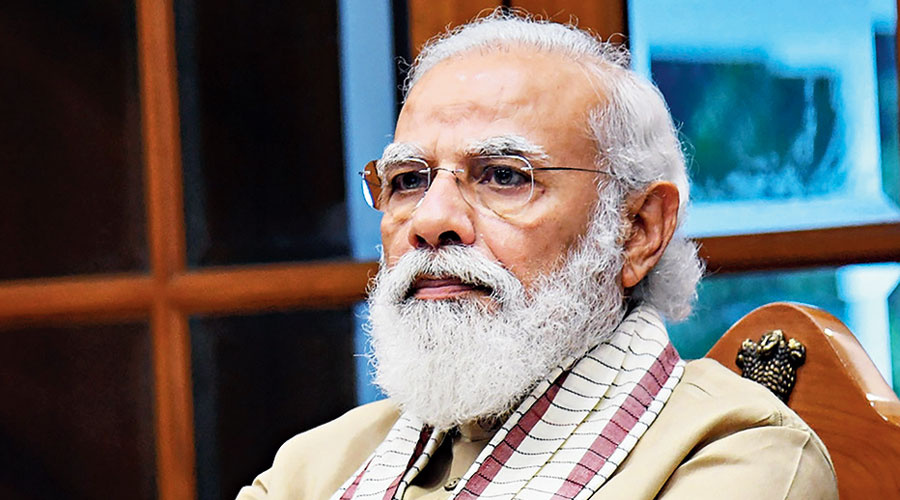Until the home minister, Amit Shah, read down Article 370 in Parliament on August 5, 2019, no one in India had expected New Delhi to change the constitutional status of Kashmir. In Kashmir itself, the people only apprehended the repealing of Article 35A that forbade outsiders from settling in the former state. But the Centre going the whole hog stunned them. A large section of people are yet to emerge from the shock as the uneasy peace that has prevailed since underlines. There’s some sense of resignation to the new state of affairs although people are far from reconciled to a post-Article 370 reality.
That said, the scale of change that the Narendra Modi government has brought about in Kashmir is stupefying: not only were Article 370 and Article 35A scrapped, but Jammu and Kashmir was also downgraded and bifurcated into two Union territories — J&K and Ladakh. Ever since, the Centre has implemented legal and administrative changes that threaten to fundamentally alter the realities on the ground: domicile rights and the region’s land have been thrown open to outsiders. So far, over 32 lakh people have been given domicile certificates, an unknown number of them outsiders. At the same time, the government has altered the electoral map of J&K by creating District Development Councils, a third tier of grass-roots democracy, whose members are directly elected unlike in any other state in India. The Centre has set in motion the delimitation of J&K whereby Jammu is set to be given more legislative positions in the assembly. More seats for Jammu will potentially change the composition of the future assembly and create political parity between Kashmir and Jammu.
However, the ongoing, far-reaching changes in Kashmir aren’t the only things that define the disruptive nature of the second term of Prime Minister Narendra Modi. Following the withdrawal of Article 370, his government moved fast to enact the Citizenship (Amendment) Act and has talked of a pan-India extension of the National Register of Citizens. The CAA has made religion the basis of granting Indian citizenship by pledging to fast-track the citizenship of non-Muslim refugees from neighbouring countries. The government has also laid the foundation of the Ram Mandir in Ayodhya, taking the decades-long Ram Janmabhoomi movement to its logical conclusion. The controversial farm laws have been passed, triggering protests from peasants. New Delhi’s chief minister, Arvind Kejriwal, who supported the Centre on the Jammu and Kashmir Reorganization Act, has himself been disempowered with most of the powers being vested in the lieutenant-governor.
In the past seven decades, no other leader has so fundamentally changed India as Modi. True, Indira Gandhi, a powerful leader, liberated Bangladesh and imposed the Emergency. But she didn’t tinker with the Nehruvian ideological basis of India. P.V. Narasimha Rao roped in Manmohan Singh, then a retired bureaucrat, as finance minister to usher in the liberalization of the Indian economy, diluting the long-standing socialist moorings of the country. But Modi’s terms as prime minister have been marked by a departure that is the most radical. He has put India firmly on the road to Hindutva. He has also shown the will to decisively alter the status quo to harness India to his nationalistic vision.
Now the question is this: would he choose to move away from what has, so far, been a single-minded pursuit of an ideological project by striving for peace in the region? He could very well do so. But this would involve engaging with Pakistan, whose bitter relations with India have been the single-most destabilizing factor in South Asia. And to this end, there’s no way out but to resolve the Kashmir problem. A resolution may well engender the disruption of the prevailing status quo, much like the repealing of Article 370. Would the prime minister go the distance?
True, the changes he has ushered in so far have been ideological in nature. They have gone down well with his electorate. They were popular and have been paying rich electoral dividends. But Kashmir will be a different ball game. More so since taking a hard line on Pakistan and Kashmir has been central to Modi’s politics. Could the adoption of an unconventional approach on Kashmir that would involve a quid pro quo with Pakistan be risky for his image? Not necessarily. Modi has the charisma, political skills and the mandate to carry a peace plan with Pakistan through. He commands a near devotional following among a majority of the population, much like Sheikh Abdullah once did in Kashmir that made it possible for him to go against the logic of Partition to tie Kashmir’s destiny with India. This undiminished support had also made it possible for him to sign the 1975 accord with Indira Gandhi, paving the way for his return to the political mainstream after leading a struggle for self-determination for 23 years.
Modi has two stark choices on Kashmir: one, realize that his ideological agenda cannot guarantee peace either in Kashmir or with Pakistan. Two, resolve the issue on mutually acceptable terms and kindle the possibility of peace in the region. There is already a framework agreement on Kashmir — the four-point formula — that can, once again, become a focus of negotiation for a settlement. Prime Minister Modi is uniquely placed to accomplish either of the two choices. One hopes he would make the right choice.











